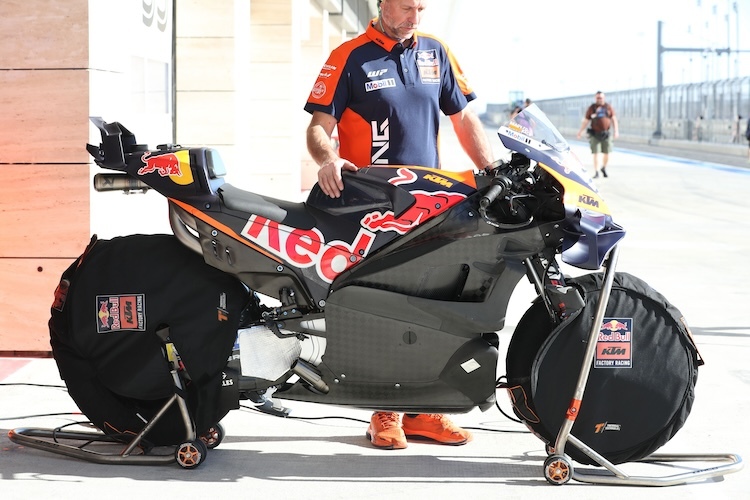Since its entry into the MotoGP World Championship, KTM has relied on a V-twin engine. The build is a success. However, in Austria they do not rule out using the 850 generation as a four-cylinder engine.
Even before the French Grand Prix, the official technical rules for the new generation of MotoGP bikes were published. The basic idea: The new displacement limit of just 850 cc is intended to capture the performance and thus the top speed of the 1,000 cc prototypes, which currently stand at around 300 hp and reach speeds of up to 365 km/h on roads such as Mugello. A reduction in tank size has also been specified for Grand Prix and sprint distances.
Following the official announcement of the groundbreaking for the new MotoGP ruleset for the 2027 season, SPEEDWEEK.com confronted KTM MotoGP Chassis Technical Director Sebastian Reis with the newly adopted engine formula. In a conversation with the German engineer, who has been in charge of the Austrian MotoGP project from the beginning, there were some clear answers – and an exciting statement about a potential new engine concept.
What's on everyone's radar – how much power can you expect from an 850cc MotoGP engine?
Sebastian Reis: If we use the now fixed parameters as the basis for calculation, the 850 cars will produce about 30-40 hp less power.
Can a decrease in displacement be equated with a decrease in the amount of gasoline?
It is true that from 2027 there will still be 20 liters available for the GP and 11 liters for the sprint. The topic of fuel in general is not exciting. And also because we then use purely non-fossil fuels. It has not yet been tested to what extent fuel consumption will change with the new gasoline specifications.
Regulations only require four-cylinder, four-stroke engines. Have there been any discussions about this?
honestly no. Everyone agreed that we should maintain the current four-cylinder basis that all manufacturers use, but still allow for differentiation. What not everyone involved wanted was for the concepts to escalate like in days gone by (editor's note: when Honda used a V-5 or Aprilia used a three-cylinder).
KTM currently runs four cylinders in a V configuration. Will this also apply to the KTM 850cc engine?
It certainly makes sense to look at other versions of the four-cylinder engine. I wouldn't rule out a four-cylinder in-line either.
This means that KTM is still undecided whether it should have an inboard motor or a V-engine?
What I can say is that we have already decided on the engine idea, but I can't reveal any of it today.
One thing is certain: today's Austrians have a very competitive drive. Even if that's not the most important statement – when it comes to top speed, the one-liter V-4 from the KTM racing department rules the competition.
It is also a fact that Curt Tripp, a competent and experienced race engine designer, is directing the film. Tripp, who was also jointly responsible for the initial draft of BMW's new four-cylinder superbike unit, with which the Munich manufacturer began its supersport reorganization in 2008, knows all the pros and cons of the designs. So it wouldn't be a surprise if the upcoming RC16 no longer debuts in V configuration. It's not that KTM hasn't always thought about tradition. The only thing that matters is the best possible performance for its intended purpose.
Even a very high level of effort is not an argument against the new straight-engined design – because, in any case, the new regulations mean that manufacturers will launch a completely new car.

“General writer. Twitter fanatic. Award-winning alcohol practitioner. Pop culture guru.”








More Stories
Novak and Misolek also continue.
Resignation from resignation! ÖSV runner returns to the World Cup
Rodri speaks about the professional strike